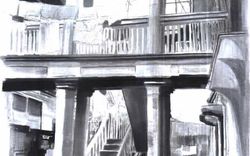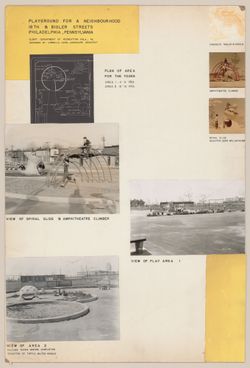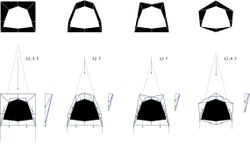Que faire pour appuyer les expériences autochtones de l’environnement bâti? Joignez-vous à l’architecte du paysage Naomi Ratte et à l’architecte Jason Surkan pour en apprendre plus sur les projets qu’ils élaborent en tant que premiers boursiers en design autochtone au CCA. Durant la semaine du 20 février, Naomi et Jason échangeront avec le personnel du CCA afin de créer(...)
Maison Shaughnessy et en ligne Mot(s)-clé(s):
Design mené par des Autochtones, boursier, Première Nation Peguis, réhabilitation des terres, habitat historique métis
23 février 2023, 18h à 19h30
Design autochtone : méthodes, pratiques, communautés, expériences
Actions:
Description:
Que faire pour appuyer les expériences autochtones de l’environnement bâti? Joignez-vous à l’architecte du paysage Naomi Ratte et à l’architecte Jason Surkan pour en apprendre plus sur les projets qu’ils élaborent en tant que premiers boursiers en design autochtone au CCA. Durant la semaine du 20 février, Naomi et Jason échangeront avec le personnel du CCA afin de créer(...)
Maison Shaughnessy et en ligne Mot(s)-clé(s):
Design mené par des Autochtones, boursier, Première Nation Peguis, réhabilitation des terres, habitat historique métis
documents textuels
ARCH253894
Description:
draft report: Proposed Scope and Method of the Community/Airport Economic Development Model. By CONSAD Research Corporation, for Federal Aviation Administration. U.S. Department of Transportation. January 1972.
1972
CAEDM - Proposed Scope and Method, draft
Actions:
ARCH253894
Description:
draft report: Proposed Scope and Method of the Community/Airport Economic Development Model. By CONSAD Research Corporation, for Federal Aviation Administration. U.S. Department of Transportation. January 1972.
documents textuels
1972
Projet
AP194.S1.1995.PR01
Description:
Project records consist of records documenting the three phases of the Synthetic Landscape project (1995-2000) as worked on by Johan Bettum and OCEAN North. The project was initially developed and submitted in 1995 for the Membrane Design International Competition held in Japan by the Taiyo Kogyo Corporation. The entry showcases a children’s playscape in the setting of Oslo’s Tøyen Park, joining both its urban surroundings and its natural landscape into a synthetic space. Afterwards, the project was exhibited at the Architecture Association (AA) in London, where Johan Bettum and Kivi Sotamaa met. This eventually led to Bettum and Sotamaa collaborating on projects, along with their respective OCEAN teams in Oslo and Helsinki. The Synthetic Landscape project continued as a research project, with a second phase in 1996 and a third phase which ran from 1997 through 2000 and integrated design methods (particle streaming, Channelling Systems) from the work made on the Töölö and Jyväskylä projects. In the third phase, a pavilion was also added to the setting. Aside from one drawing, all records for this project are in a digital format. Drawings and models from phase 1 show parts or the whole of a shell-like structure. A color scheme seems to be associated to the different components of the structure. A report on phases 1 and 2 discusses the use of synthetic and composite materials for the structure, explaining the concept for the site. Phase 2 textual records include a working plan, site charts and program. Additional drawings and models show an evolution in the shape of the landscape. Most records are related to the third phase of Synthetic Landscape. They are largely drawings and models showing textures and coloured grafts used in the design process, section and surfaces studies, as well as site plans. Other files of the third phase consist of animated renderings of Channelling Systems studies within the Synthetic Landscape topology, saved as Quicktime MOV files. Additionally, the third phase of Synthetic Landscape has files related to the FEM (finite element method) analysis process utilized in the project’s engineering. This particular section includes raster images showing vectorial drawings and data appearing to be surface studies. These were likely created with the software Mathematica. The bulk of textual documentation on the project’s scope and outcomes may be found in AP194.S1.1995.PR01.001 for phases 1 and 2, and in AP194.S1.1995.PR01.005 for phase 3. The latter file also contains documentation related to a grant application to The Research Council of Norway; a proposal for a conference and exhibition at the AA; and administrative records such as budgets, correspondence, invoices, progress reports, meeting agendas and minutes. For all project phases, records related to the design process consist of CAD models saved in a variety of modelling formats (iges, fmz, dgn, 3dm, dxf) as well as raster or vector images (tiff, jpeg, png, eps, pict, etc.). In some cases, only these raster or vector images of the original CAD drawings are present in the archive.
1995-2000
Synthetic Landscape research project, Oslo, Norway (1995-2000)
Actions:
AP194.S1.1995.PR01
Description:
Project records consist of records documenting the three phases of the Synthetic Landscape project (1995-2000) as worked on by Johan Bettum and OCEAN North. The project was initially developed and submitted in 1995 for the Membrane Design International Competition held in Japan by the Taiyo Kogyo Corporation. The entry showcases a children’s playscape in the setting of Oslo’s Tøyen Park, joining both its urban surroundings and its natural landscape into a synthetic space. Afterwards, the project was exhibited at the Architecture Association (AA) in London, where Johan Bettum and Kivi Sotamaa met. This eventually led to Bettum and Sotamaa collaborating on projects, along with their respective OCEAN teams in Oslo and Helsinki. The Synthetic Landscape project continued as a research project, with a second phase in 1996 and a third phase which ran from 1997 through 2000 and integrated design methods (particle streaming, Channelling Systems) from the work made on the Töölö and Jyväskylä projects. In the third phase, a pavilion was also added to the setting. Aside from one drawing, all records for this project are in a digital format. Drawings and models from phase 1 show parts or the whole of a shell-like structure. A color scheme seems to be associated to the different components of the structure. A report on phases 1 and 2 discusses the use of synthetic and composite materials for the structure, explaining the concept for the site. Phase 2 textual records include a working plan, site charts and program. Additional drawings and models show an evolution in the shape of the landscape. Most records are related to the third phase of Synthetic Landscape. They are largely drawings and models showing textures and coloured grafts used in the design process, section and surfaces studies, as well as site plans. Other files of the third phase consist of animated renderings of Channelling Systems studies within the Synthetic Landscape topology, saved as Quicktime MOV files. Additionally, the third phase of Synthetic Landscape has files related to the FEM (finite element method) analysis process utilized in the project’s engineering. This particular section includes raster images showing vectorial drawings and data appearing to be surface studies. These were likely created with the software Mathematica. The bulk of textual documentation on the project’s scope and outcomes may be found in AP194.S1.1995.PR01.001 for phases 1 and 2, and in AP194.S1.1995.PR01.005 for phase 3. The latter file also contains documentation related to a grant application to The Research Council of Norway; a proposal for a conference and exhibition at the AA; and administrative records such as budgets, correspondence, invoices, progress reports, meeting agendas and minutes. For all project phases, records related to the design process consist of CAD models saved in a variety of modelling formats (iges, fmz, dgn, 3dm, dxf) as well as raster or vector images (tiff, jpeg, png, eps, pict, etc.). In some cases, only these raster or vector images of the original CAD drawings are present in the archive.
Project
1995-2000
articles
Narration en images
Narration en images
Warebi Gabriel Brisibe et Ramota Obagah-Stephen proposent d’« autre » méthodes de recherche sur l’habitat colonial
Actions:
archives
Niveau de description archivistique:
Fonds
AP194
Résumé:
The Johan Bettum OCEAN North projects records, 1995-2000, consist of born-digital files and a physical drawing that document three projects by the OCEAN North collective: Synthetic Landscape (1995-2000), Jyväskylä Music and Arts Centre (competition, 1997), and Tölöö Football Stadium (competition, 1997). The archive also includes a small amount of additional born-digital reference materials on 11 projects from the collective, including the three projects mentioned above.
1995-2000
Documents d’archives de Johan Bettum pour les projets de OCEAN North
Actions:
AP194
Résumé:
The Johan Bettum OCEAN North projects records, 1995-2000, consist of born-digital files and a physical drawing that document three projects by the OCEAN North collective: Synthetic Landscape (1995-2000), Jyväskylä Music and Arts Centre (competition, 1997), and Tölöö Football Stadium (competition, 1997). The archive also includes a small amount of additional born-digital reference materials on 11 projects from the collective, including the three projects mentioned above.
archives
Niveau de description archivistique:
Fonds
1995-2000
documents textuels
DR2012:0015:023:017
Description:
Assorted publications, including: - DMG-DRS Journal: Design Research and Methods (formerly DMG Newsletter), vol. 7, no. 3; - Centre d'études et de recherches architecturales, URSS: supplément au bulletin d'information inter-éstablissements, 21 février 1977.
1973, 1977
Architecture and design publications
Actions:
DR2012:0015:023:017
Description:
Assorted publications, including: - DMG-DRS Journal: Design Research and Methods (formerly DMG Newsletter), vol. 7, no. 3; - Centre d'études et de recherches architecturales, URSS: supplément au bulletin d'information inter-éstablissements, 21 février 1977.
documents textuels
1973, 1977
Inscrire les femmes dans lhistoire de larchitecture nécessite de repenser à la fois les pratiques archivistiques et les approches historiographiques. Dans ce séminaire, Touloumi sinspirera de son expérience de collecte et de catalogage des œuvres de larchitecte et crocheteuse Christine Benglia-Bevington (1936–2020) pour discuter de la praxis féministe dans les archives.(...)
Salle d'étude, CCA
3 juillet 2025, 18h à 19h30
Fils communs : fabriquer les archives de femmes
Actions:
Description:
Inscrire les femmes dans lhistoire de larchitecture nécessite de repenser à la fois les pratiques archivistiques et les approches historiographiques. Dans ce séminaire, Touloumi sinspirera de son expérience de collecte et de catalogage des œuvres de larchitecte et crocheteuse Christine Benglia-Bevington (1936–2020) pour discuter de la praxis féministe dans les archives.(...)
Salle d'étude, CCA
Juan José Castellón présente ses dernières recherches sur l’application de méthodes de conception qui intègrent des paramètres structuraux et spatiaux, et plus spécifiquement le développement de prototypes stéréotomiques en architecture. Dans le cadre de la série Ils veulent vous parler, des professionnels du design et de l’architecture sont invités à parler de leurs(...)
23 octobre 2014 , 18h
Juan José Castellón veut vous parler
Actions:
Description:
Juan José Castellón présente ses dernières recherches sur l’application de méthodes de conception qui intègrent des paramètres structuraux et spatiaux, et plus spécifiquement le développement de prototypes stéréotomiques en architecture. Dans le cadre de la série Ils veulent vous parler, des professionnels du design et de l’architecture sont invités à parler de leurs(...)
articles
apprentissage automatique, dessins d'architecture, arbres, IA, intelligence artificielle, histoire de l'architecture, protocoles, boîte à outils, méthodes de recherche
10 juillet 2023
Apprendre de l'apprentissage automatique
Sylvia Lavin réfléchit aux arbres modélisés et aux historiographies architecturales du numérique
Actions:
Projet
AP075.S1.1957.PR02
Description:
This project series documents Cornelia Hahn Oberlander's playground project for University Hill Elementary School on Chancellor Boulevard, in University Endowment Lands, Vancouver, British Columbia. Oberlander worked on this project in 1957. She developed her concept for the school play area with a participatory method, asking the children to draw the plants they would like to have included in the landscaping. It consisted in a paved area right at the back of the school, tennis courts to be used for wheeltoys and movable equipment for play, and large lawn area for free play with quiet area to sit. The lawn area includes a play space with logs, rocks, climbing trees and a loghouse situated at the southwest corner of the playground. The project series contains landscape sketches, design development drawings, landscape plan for the proposal playground, and a presentation panel. The project is also documented through textual records, such as correspondence, research material and press clipping on the school.
1957
University Hill Elementary School, Vancouver, British Columbia (1957)
Actions:
AP075.S1.1957.PR02
Description:
This project series documents Cornelia Hahn Oberlander's playground project for University Hill Elementary School on Chancellor Boulevard, in University Endowment Lands, Vancouver, British Columbia. Oberlander worked on this project in 1957. She developed her concept for the school play area with a participatory method, asking the children to draw the plants they would like to have included in the landscaping. It consisted in a paved area right at the back of the school, tennis courts to be used for wheeltoys and movable equipment for play, and large lawn area for free play with quiet area to sit. The lawn area includes a play space with logs, rocks, climbing trees and a loghouse situated at the southwest corner of the playground. The project series contains landscape sketches, design development drawings, landscape plan for the proposal playground, and a presentation panel. The project is also documented through textual records, such as correspondence, research material and press clipping on the school.
Project
1957




